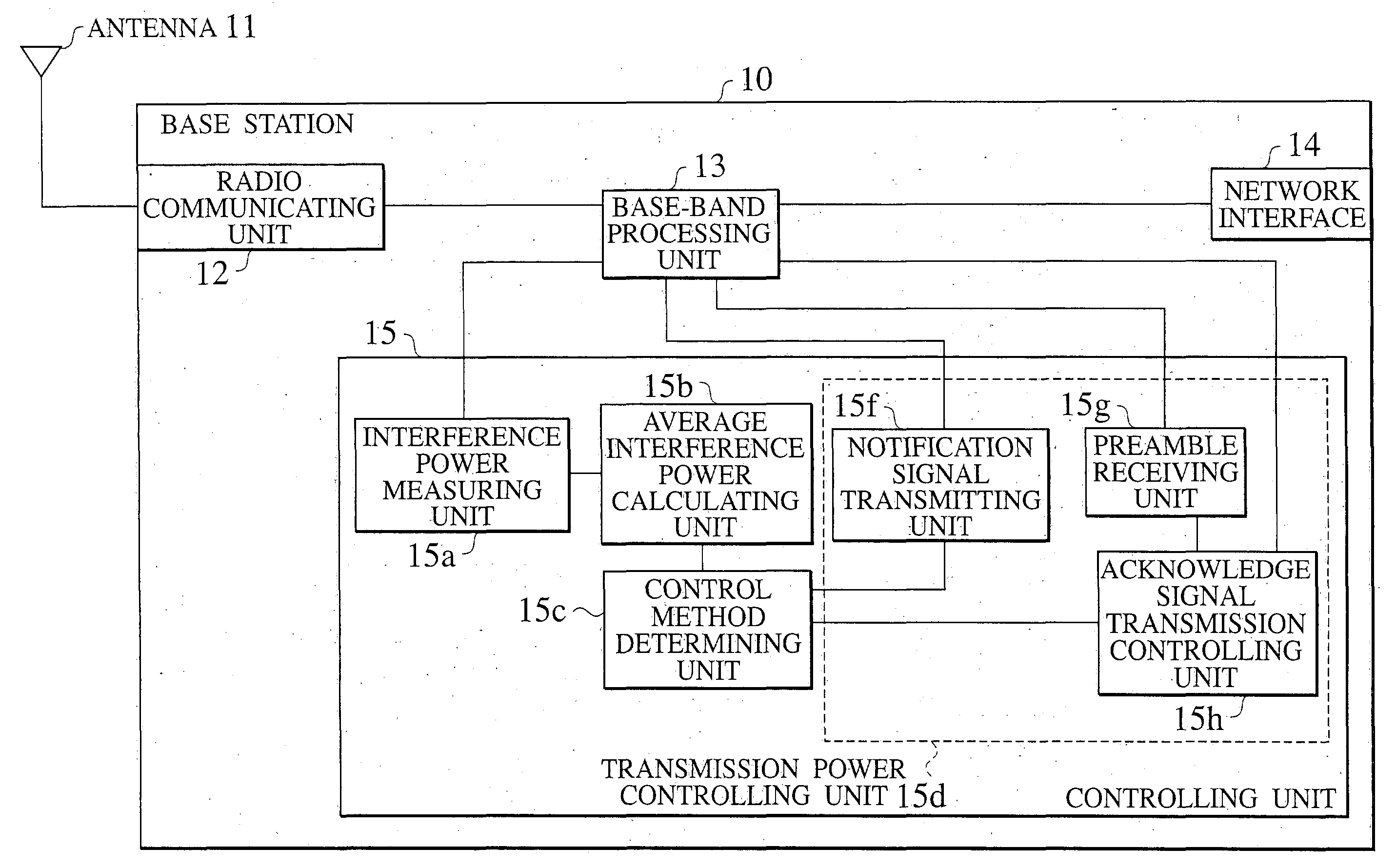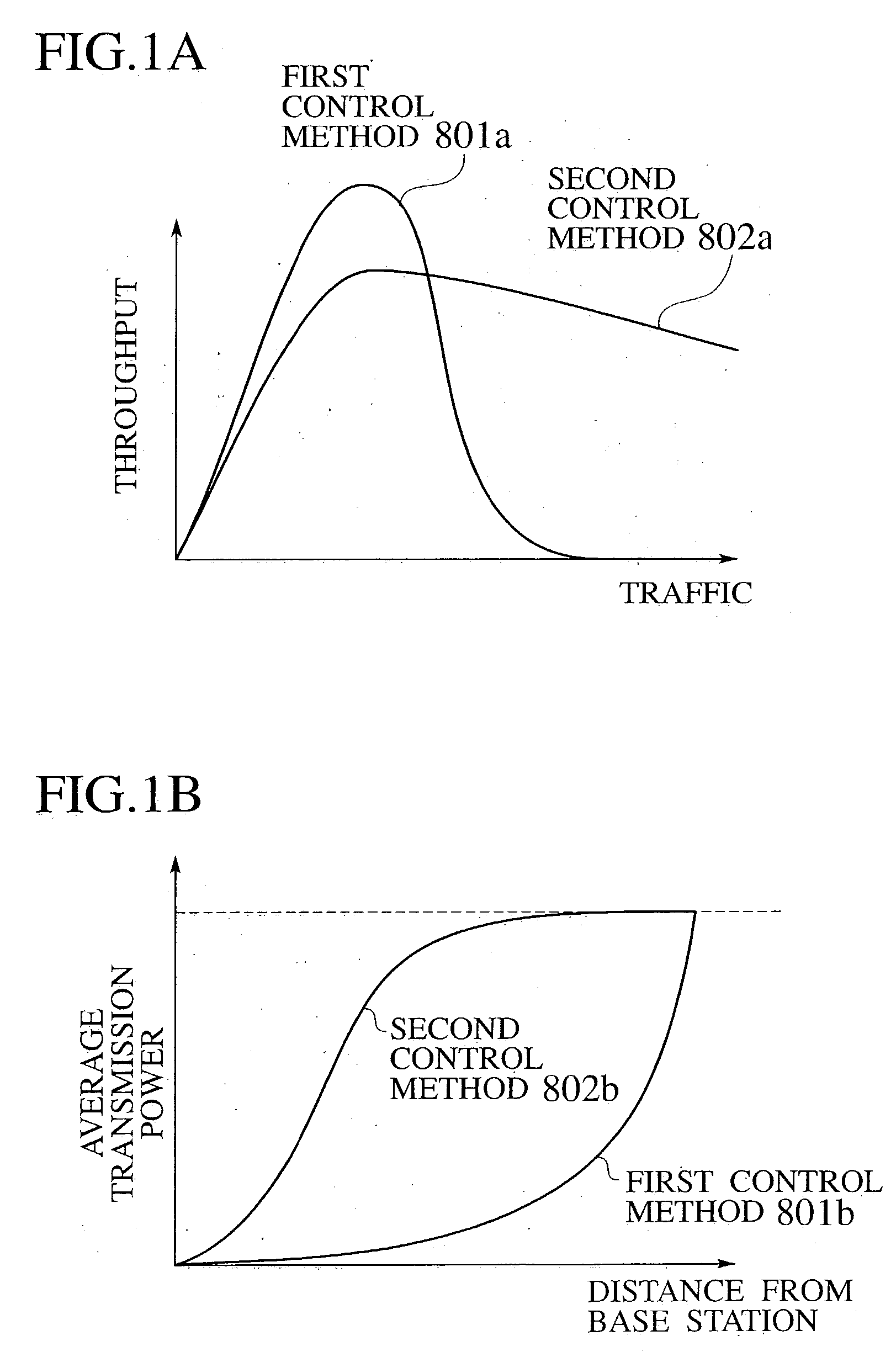Transmission power control method, radio communication system, base station and mobile station
a technology of radio communication system and transmission power control, which is applied in the direction of power management, transmission monitoring, wireless communication, etc., can solve the problems of communication errors, power observed, and lower throughput than a method without transmission power control in the transmitter
- Summary
- Abstract
- Description
- Claims
- Application Information
AI Technical Summary
Benefits of technology
Problems solved by technology
Method used
Image
Examples
Embodiment Construction
>
[0049] FIG. 2 shows an entire configuration of the radio communication system according to the first embodiment of the present invention.
[0050] As shown in FIG. 2, the radio communication system has a plurality of cells (radio zones) 1a to 1e which are formed by a plurality of base stations 10a to 10e. A plurality of mobile stations 30a to 30f exist in the respective cells 1a to 1e.
[0051] As shown in FIG. 2, the radio communication system according to the first embodiment allows radio communications between the base station 10 and the plurality of mobile stations 30 via CDMA radio channels.
[0052] As shown in FIG. 2, when the mobile station 30a existing in the cell 1a transmits packet signals A to the base station 10a which forms a cell 1a, packet signals B which are transmitted from the mobile station 30b existing in the cell 1a and the mobile station 30c existing in the cell 1b can be interference signals to the packet signals A.
[0053] FIG. 3 shows functional blocks of the base st...
PUM
 Login to View More
Login to View More Abstract
Description
Claims
Application Information
 Login to View More
Login to View More - R&D
- Intellectual Property
- Life Sciences
- Materials
- Tech Scout
- Unparalleled Data Quality
- Higher Quality Content
- 60% Fewer Hallucinations
Browse by: Latest US Patents, China's latest patents, Technical Efficacy Thesaurus, Application Domain, Technology Topic, Popular Technical Reports.
© 2025 PatSnap. All rights reserved.Legal|Privacy policy|Modern Slavery Act Transparency Statement|Sitemap|About US| Contact US: help@patsnap.com



